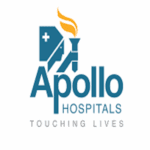healthysoch
As of 2 April, a total of 1100 confirmed and probable EVD cases have been reported, of which 690 died (case fatality ratio 63%). Of the 1100 cases with reported age and sex, 58% (633) were female, and 29% (320) were children aged less than 18 years. The number of healthcare workers affected has risen to 81 (7% of total cases), including 27 deaths.
To date, a total of 338 EVD patients who received care at Ebola Treatment Centres (ETCs) have been discharged. As part of a broader programme to provide care for Ebola survivors and build sustainable, local response capacity, an eye care training programme and clinic was completed this week in Beni through the combined efforts of WHO, Ministry of Health, and a team of ophthalmologists from Emory University and the University of North Carolina. A total of 252 EVD survivors were screened in the eye clinic and ten national ophthalmologists were trained to provide higher level eye care in their communities. Feedback from participating national healthcare providers and enrolled survivors was overwhelmingly positive. Of note were some of the clinical findings witnessed in the present cohort of EVD survivors. The team noted that complications such as uveitis were observed at lower rates when compared to cases from the 2014-16 West Africa EVD outbreak.
A Risk Communication and Community Engagement partners meeting was held in Goma from 25-26 March, involving more than 80 participants representing the different partners participating in the outbreak response. The discussion focused on engagement strategies that have worked in the past, what is working on the ground currently, and what needs to be improved to build upon our current gains and address future challenges.
The recent shift of emphasis in the response strategy to promoting greater engagement and ownership by affected communities is beginning to produce results. While community reluctance and mistrust remain present in certain areas around Butembo and Katwa, other areas saw a notable decrease in resistance to the presence of response workers. Diligent efforts at engaging with community committees through direct dialogue resulted in the reopening of the ETC in Katwa, bringing the total number of operational facilities providing care up to six ETCs in Beni, Butembo, Goma, Komanda, Mangina, and six transit centres in Beni, Bunia, Katwa, Kayna, Bwanasura, and Oicha. A more proactive approach to investigating and resolving incidents in the communities is also being undertaken to minimise the risk of misunderstandings and to mitigate potential sources of mistrust between local residents and healthcare providers.
The increase in the number of cases this week highlights the difficult environment the outbreak is occurring in, as well as the multitude of evolving challenges confronting the outbreak response on a daily basis. A holistic approach involving rigorous implementation of proven measures to break chains of transmission, thorough contract tracing, continued vaccination of high-risk contacts, and persistent efforts in community engagement must be persevered with to curtail the spread of EVD in the Democratic Republic of the Congo.
Figure 1: Confirmed and probable Ebola virus disease cases by week of illness onset, data as of 2 April 2019*

*Data in recent weeks are subject to delays in case confirmation and reporting, as well as ongoing data cleaning.
Figure 2: Confirmed and probable Ebola virus disease cases by health area, North Kivu and Ituri provinces, Democratic Republic of the Congo, data as of 29 March 2019


Table 1: Confirmed and probable Ebola virus disease cases, and number of health areas affected, by health zone, North Kivu and Ituri provinces, Democratic Republic of the Congo, data as of 2 April 2019**
healthy such







